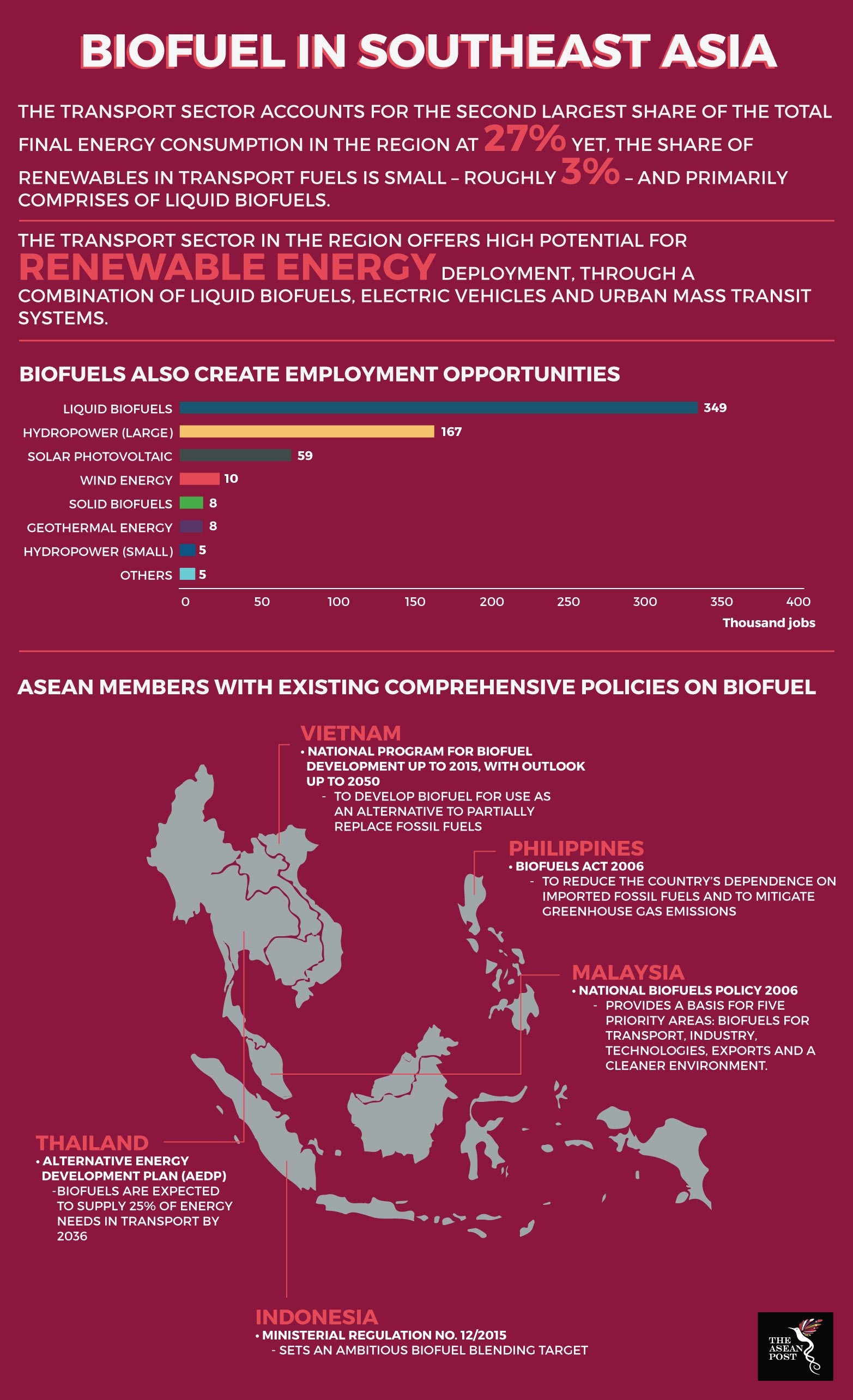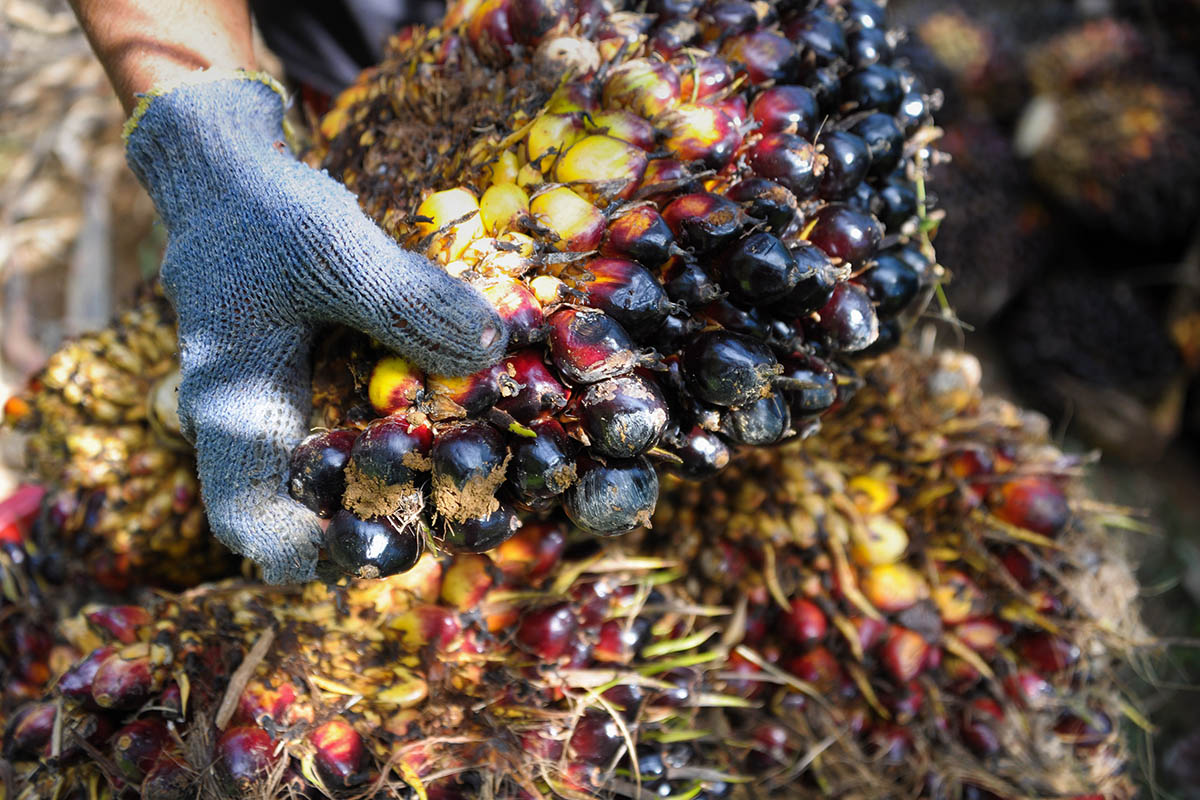Biofuel is simply fuel made from biological matter. Contrary to popular belief, biofuels are not a 21st century creation. It has been around since the start of the previous century. Founder of Ford Motor Company, Henry Ford even experimented with the idea of fuelling his Model T’s with ethanol.
However, the discovery of fossil fuel deposits completely overhauled the landscape of energy use in the transport sector. Cheaper and more advanced extractive technologies meant that mankind could dig deeper wells to harvest more and more of these “ancient biofuels” – as fossil fuel itself is derived from decomposed plants and animals which have been buried for eons.
But our craze for black gold has resulted in a heavy cost to our environment and now, the rush is on to find alternative and more sustainable sources to fuel our energy needs into the future.
Biofuels are a possible solution
In Southeast Asia, biofuels are sourced primarily from agricultural waste like plant oils, recycled greases and animal fats – just to name a few – and are used predominantly in the transport sector. Thailand has the largest usage share of liquid biofuels in the region, comprising almost 17 percent of its total transport fuels. It derives its biofuels mostly from palm oil. In 2015, 36 percent of the final demand for palm oil accounted for the production of biodiesel. The country has an ambitious plan of using biofuel to sustain 25 percent of its energy needs in the transport sector by 2036.
Although biofuels are at a relatively nascent stage of development, it hasn’t stopped governments like Thailand, Malaysia, Indonesia, the Philippines and Vietnam from improving on their biofuel development capacity. One way of doing so is to facilitate the increase of the share of biofuels in biofuel blending which refers to a blend of biofuel and existing fossil fuels like petroleum.
Thailand introduced an option for B2 (2 percent biodiesel and 98 percent petroleum diesel) in 2008 which has since risen to B7 in 2014 with prospects of reaching B10 in the near term. Indonesia, via its Ministerial Regulation No. 12/2015 has set an ambitious target of B30 by 2025. Malaysia, which introduced the B5 mandate in 2011 is also looking to advance from its current B7 mandate to a B10 mandate.

Indonesia and Malaysia are currently finding it difficult to develop their biofuel industries due to falling crude oil prices. As top palm oil producing countries, it makes more financial sense in producing palm oil to be sold directly in international markets rather that further process it for bioenergy.
The Philippines, where the current share of renewables in the transport sector is at 4 percent, has also set blending targets for itself. It currently has a E10 ethanol mandate for gasoline (10 percent ethanol and 90 percent gasoline), and B2 biodiesel mandate for diesel which is expected to increase to E20 and B20 respectively, in 2030.
Vietnam, is another country looking towards biofuels to sustain its energy needs in the transportation sector. Since the development of biofuel industries in 2007, the government there has been encouraging the production and consumption of E5 and B5 for domestic use. Myanmar and Lao PDR have also been looking into developing biofuel as an alternative energy source but thus far policy frameworks to do so are still in intermediate phases.
Biofuels will play a crucial role in feeding the growing demand for energy in the region although criticisms have been levelled over fuel derived from palm oil – due to the destruction of forests to give way to palm oil plantations.
The key is in proper policy and financing. Government policy which would ensure the sustainable development of palm oil plantations – which is a key resource towards the development of biofuels – should be made a priority. This is to help eradicate the prevailing sentiment that palm oil development is bad for the environment.
Besides that, in financing biofuel projects, operational and technological risks must be mitigated in order to make it an attractive investment opportunity. Debt servicing will always be an issue thanks to the aforementioned risks involved. To alleviate this, financiers and project developers can look into loan guarantee mechanisms, sinking funds and other exit options which would leave both sides happy.
Essentially, biofuel is only now picking up steam and as it does, there will be more risks uncovered which would provide one with reasons to doubt its potential. However, such risks can be averted, keeping in mind that the long-term sustainability of the product will guarantee positive returns.
